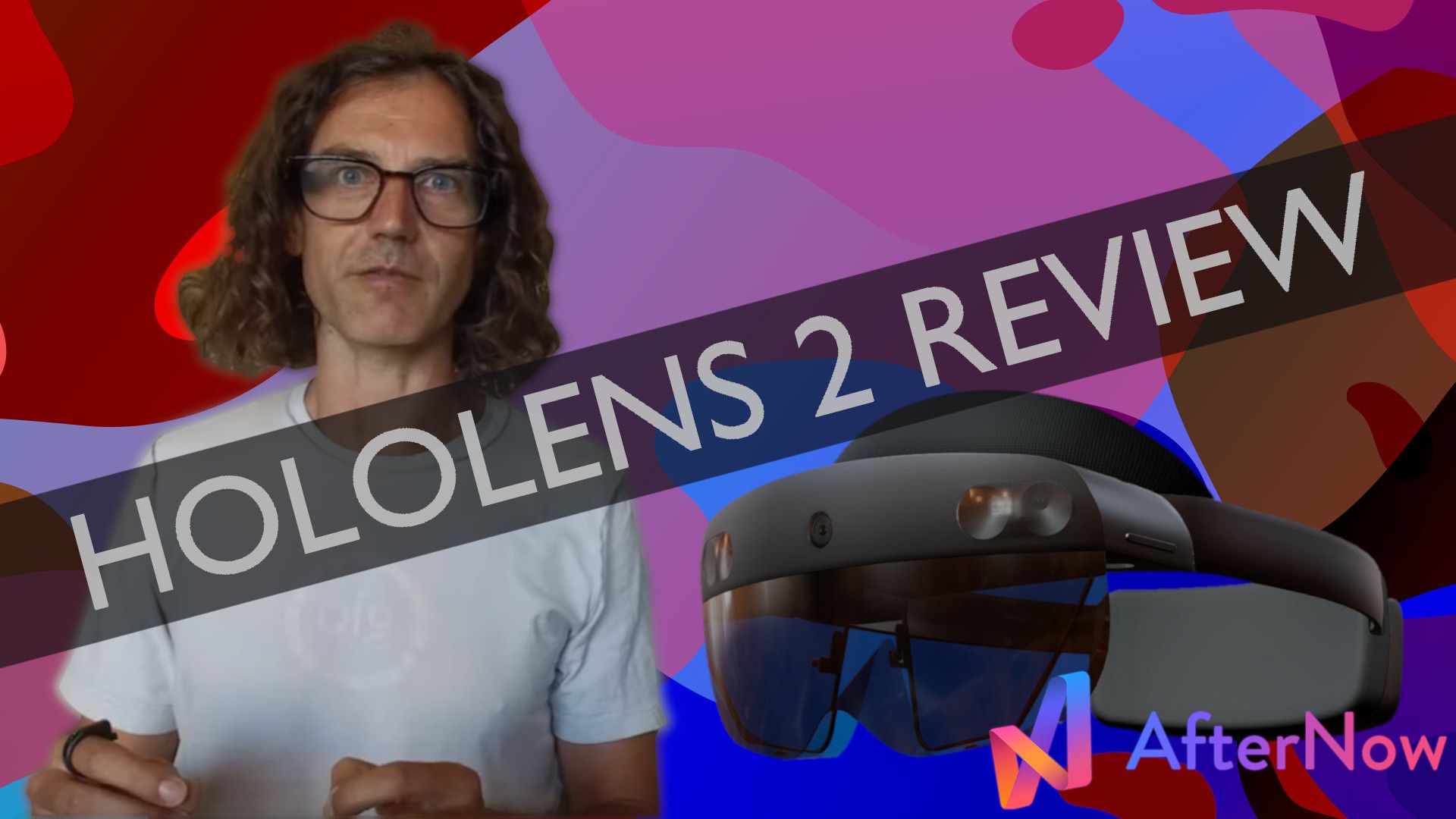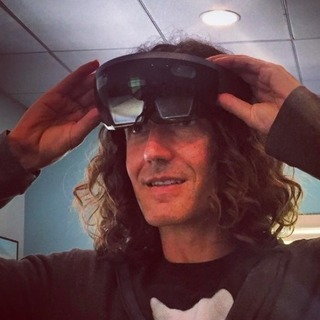Today, we’re bringing you a review of the Microsoft Hololens 2 mixed reality headset. We received an early version, but it’s very similar to the full version that is currently shipping.
The Hololens 2 is an all-inclusive device and very comfortable to wear even for extended periods of time. Starting with the hardware, we have a sleek design and a durable frame. The dial on the back allows the user to adjust the size for comfort. You can also move the visor up and down on the Hololens 2 augmented reality headset, which is a cool new feature.
Additionally, the microphones are discreet on the bottom of the lenses, and the speakerphones are hidden as well. They’re much thinner and more evolved than in the first version. All of these adjustments have improved the wearability and comfort of the device.
In this review we go over the hardware, comfort and key features of the devices. Then we will do live interactive demo of the different gestures with the new hand tracking capabilities, go over the eye tracking and new audio capabilities.
The third part of the review covers the development tools and more specifically the MRTK2 we will do a quick over view and key concept driving the mixed reality tool kit 2 for Hololens.
Hand Gestures and Eye Tracking on the Hololens 2
The Hololens 2 mixed reality headset introduces the latest version of Microsoft’s hand gesture and eye-tracking technology. Like the Hololens 1, the quality of the hand gestures and eye tracking are excellent but are even more accurate and faster with this version.
The hand tracking utilizes the index finger for tracking gesture interactions with a blue dot. Hand gestures are tracked efficiently so that objects can be seamlessly interacted with.
Types of interactions with 3D objects include grabbing and rotating them around. Buttons can be pressed and a bounding box around each object helps the user select, turn or rotate it. Each gesture is a very natural feeling and rapid, which is crucial for real-world use cases.
2D interactions on the Hololens are equally seamless and can be easily moved, zoomed in similar to a virtual touchscreen. Objects can interact with both at a near or far distance with a “laser” connected to the index finger so that the hands don’t have to be moved as much.
The eye tracking on the Hololens 2 is advanced and very fast. Objects can be quickly selected simply by looking at them when the feature is active. It’s very intuitive to use the eye tracking and it’s the best I’ve seen on any headset to date. The text scrolling is also a useful feature that utilizes the eye tracking; the technology can identify where you are in a paragraph and then scroll down the page for you as you read.
Noise Cancellation on the Hololens 2
The noise cancellation on the Hololens 2 is excellent. This can be great in a conference when you are in a noisy room or when you’re working with AI software like Alexa or Cortana.
As far as design, the field of view for holographic images is better than the Hololens 1 but could still be improved a bit. There are plenty of details about the design and hardware on the website if you want to look further into the product.
For developers, the mixed reality toolkit for building mixed reality experiences is incredibly extensive and in-depth. It seems that the framework would work with many other devices as well. It can be overwhelming at first but is impressive in its scale.
Solution-Ready AR Headset
The Hololens 2 is a solution ready augmented reality headset that can be adopted for a vast range of enterprise use cases. We are now going from experimentation and testing with the Hololens 1 to scaling and massive deployment with the Hololens 2.
The Hololens 2 provides an immediate return on investment because of just how solution-ready it is. Partner developers (such as AfterNow) are now expected by Microsoft to come up with viable solution-ready products for Hololens 2 customers, not just proof concepts.
All that is needed is the hardware combined with the appropriate software created for the Hololens and it’s ready to go for real-world use. With its industry-leading gesture and eye-tracking technology, how intuitive it is to use, and its comfort and efficiency, the Hololens 2 is the best-mixed reality headset for enterprise use cases.
In many ways it excels over competing devices such as the MagicLeap; for example, the eye-tracking is far more precise. It’s also far more comfortable than the MagicLeap because there’s no requirement to carry a separate computer on your belt.
I hope you have found our review of the Hololens 2 mixed reality headset to be useful whether you are simply curious about the device or considering adopting it for an enterprise use case. I think it’s the best device on the market (once it actually gets to the market) unless something comes online before then.
Pros:
- Efficient eye-tracking
- Intuitive and quick hand gestures
- Excellent noise cancellation
- Lightweight, all-inclusive and comfortable to wear
- Expansive mixed reality toolkit for developers
Cons:
- Field of view remains slightly small


